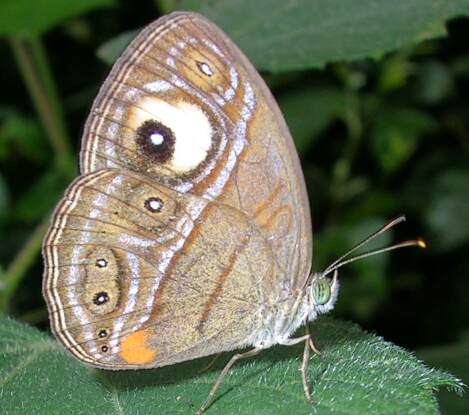|
Junonia Grisea
''Junonia grisea'', the gray buckeye or grey buckeye, is a species in the butterfly family Nymphalidae. It is found in North America, west of the Rocky Mountains. Like the common buckeye, the gray buckeye is a brown butterfly with eyespots on its wings that distract predators from its body. ''Junonia grisea'' was formerly considered a subspecies of the common buckeye, ''Junonia coenia'', called ''Junonia coenia grisea''. The gray buckeye's status as a separate species was discovered in 2018 by Dr. Jeffrey Marcus, an entomologist at the University of Manitoba The University of Manitoba (U of M, UManitoba, or UM) is a Canadian public research university in the province of Manitoba. [...More Info...] [...Related Items...] OR: [Wikipedia] [Google] [Baidu] |
Butterfly
Butterflies are insects in the macrolepidopteran clade Rhopalocera from the Order (biology), order Lepidoptera, which also includes moths. Adult butterflies have large, often brightly coloured wings, and conspicuous, fluttering flight. The group comprises the large superfamily (zoology), superfamily Papilionoidea, which contains at least one former group, the skippers (formerly the superfamily "Hesperioidea"), and the most recent analyses suggest it also contains the moth-butterflies (formerly the superfamily "Hedyloidea"). Butterfly fossils date to the Paleocene, about 56 million years ago. Butterflies have a four-stage life cycle, as like most insects they undergo Holometabolism, complete metamorphosis. Winged adults lay eggs on the food plant on which their larvae, known as caterpillars, will feed. The caterpillars grow, sometimes very rapidly, and when fully developed, pupate in a chrysalis. When metamorphosis is complete, the pupal skin splits, the adult insect climbs o ... [...More Info...] [...Related Items...] OR: [Wikipedia] [Google] [Baidu] |
Nymphalidae
The Nymphalidae are the largest family of butterflies, with more than 6,000 species distributed throughout most of the world. Belonging to the superfamily Papilionoidea, they are usually medium-sized to large butterflies. Most species have a reduced pair of forelegs and many hold their colourful wings flat when resting. They are also called brush-footed butterflies or four-footed butterflies, because they are known to stand on only four legs while the other two are curled up; in some species, these forelegs have a brush-like set of hairs, which gives this family its other common name. Many species are brightly coloured and include popular species such as the emperors, monarch butterfly, admirals, tortoiseshells, and fritillaries. However, the under wings are, in contrast, often dull and in some species look remarkably like dead leaves, or are much paler, producing a cryptic effect that helps the butterflies blend into their surroundings. Nomenclature Rafinesque introduced ... [...More Info...] [...Related Items...] OR: [Wikipedia] [Google] [Baidu] |
Rocky Mountains
The Rocky Mountains, also known as the Rockies, are a major mountain range and the largest mountain system in North America. The Rocky Mountains stretch in straight-line distance from the northernmost part of western Canada, to New Mexico in the southwestern United States. Depending on differing definitions between Canada and the U.S., its northern terminus is located either in northern British Columbia's Terminal Range south of the Liard River and east of the Trench, or in the northeastern foothills of the Brooks Range/ British Mountains that face the Beaufort Sea coasts between the Canning River and the Firth River across the Alaska-Yukon border. Its southernmost point is near the Albuquerque area adjacent to the Rio Grande rift and north of the Sandia–Manzano Mountain Range. Being the easternmost portion of the North American Cordillera, the Rockies are distinct from the tectonically younger Cascade Range and Sierra Nevada, which both lie farther to its west. The ... [...More Info...] [...Related Items...] OR: [Wikipedia] [Google] [Baidu] |
Junonia Coenia
''Junonia coenia'', known as the common buckeye or buckeye, is a butterfly in the family Nymphalidae. It is found in the United States east of the Rocky Mountains and in Mexico. Its habitat is open areas with low vegetation and some bare ground. Its original ancestry has been traced to Africa, which then experiences divergence in Asia. The species ''Junonia grisea'', the gray buckeye, is found west of the Rocky Mountains and was formerly a subspecies of ''Junonia coenia''. Caterpillars of these butterflies appear to prefer plants that produce iridoid glycosides, which are bitter compounds that release a hormone called gastrin that activates the digestive system (i.e. hunger); therefore, iridoid glycoside producing plants stimulate and attract their appetites particularly when found in plants like ''Plantago lanceolata''. In fact, the presence of these metabolites may trigger oviposition behaviors in female butterflies so that descendant larval bodies may better incorporate iridoi ... [...More Info...] [...Related Items...] OR: [Wikipedia] [Google] [Baidu] |
Eyespot (mimicry)
An eyespot (sometimes ocellus) is an eye-like marking. They are found in butterflies, reptiles, cats, birds and fish. Eyespots could be explained in at least three different ways. They may be a form of mimicry in which a spot on the body of an animal resembles an eye of a different animal, to deceive potential predator or prey species. They may be a form of self-mimicry, to draw a predator's attention away from the prey's most vulnerable body parts. Or they may serve to make the prey appear inedible or dangerous. Eyespot markings may play a role in intraspecies communication or courtship; the best-known example is probably the eyespots on a peacock's display feathers. The pattern-forming biological process (morphogenesis) of eyespots in a wide variety of animals is controlled by a small number of genes active in embryonic development, including the genes called Engrailed, Distal-less, Hedgehog, Antennapedia, and the Notch signaling pathway. Artificial eyespots have been sh ... [...More Info...] [...Related Items...] OR: [Wikipedia] [Google] [Baidu] |
Phys
Physics is the natural science that studies matter, its fundamental constituents, its motion and behavior through space and time, and the related entities of energy and force. "Physical science is that department of knowledge which relates to the order of nature, or, in other words, to the regular succession of events." Physics is one of the most fundamental scientific disciplines, with its main goal being to understand how the universe behaves. "Physics is one of the most fundamental of the sciences. Scientists of all disciplines use the ideas of physics, including chemists who study the structure of molecules, paleontologists who try to reconstruct how dinosaurs walked, and climatologists who study how human activities affect the atmosphere and oceans. Physics is also the foundation of all engineering and technology. No engineer could design a flat-screen TV, an interplanetary spacecraft, or even a better mousetrap without first understanding the basic laws of physics. (. ... [...More Info...] [...Related Items...] OR: [Wikipedia] [Google] [Baidu] |
Subspecies
In biological classification, subspecies is a rank below species, used for populations that live in different areas and vary in size, shape, or other physical characteristics (morphology), but that can successfully interbreed. Not all species have subspecies, but for those that do there must be at least two. Subspecies is abbreviated subsp. or ssp. and the singular and plural forms are the same ("the subspecies is" or "the subspecies are"). In zoology, under the International Code of Zoological Nomenclature, the subspecies is the only taxonomic rank below that of species that can receive a name. In botany and mycology, under the International Code of Nomenclature for algae, fungi, and plants, other infraspecific ranks, such as variety, may be named. In bacteriology and virology, under standard bacterial nomenclature and virus nomenclature, there are recommendations but not strict requirements for recognizing other important infraspecific ranks. A taxonomist decides whether ... [...More Info...] [...Related Items...] OR: [Wikipedia] [Google] [Baidu] |
Entomology
Entomology () is the science, scientific study of insects, a branch of zoology. In the past the term "insect" was less specific, and historically the definition of entomology would also include the study of animals in other arthropod groups, such as arachnids, myriapods, and crustaceans. This wider meaning may still be encountered in informal use. Like several of the other fields that are categorized within zoology, entomology is a taxon-based category; any form of scientific study in which there is a focus on insect-related inquiries is, by definition, entomology. Entomology therefore overlaps with a cross-section of topics as diverse as molecular genetics, behavior, neuroscience, biomechanics, biochemistry, systematics, physiology, developmental biology, ecology, morphology (biology), morphology, and paleontology. Over 1.3 million insect species have been described, more than two-thirds of all known species. Some insect species date back to around 400 million years ago. Th ... [...More Info...] [...Related Items...] OR: [Wikipedia] [Google] [Baidu] |
University Of Manitoba
The University of Manitoba (U of M, UManitoba, or UM) is a Canadian public research university in the province of Manitoba.''University of Manitoba Act'', C.C.S.M. c. U60. Retrieved on July 15, 2008 Founded in 1877, it is the first of . Both by total student enrolment and campus area, the U of M is the largest university in the province of Manitoba and the 17th-largest in all of Canada. Its main campus is located in the |
Junonia
''Junonia'' is a genus of nymphalid butterflies, described by Jacob Hübner in 1819. They are commonly known as buckeyes, pansies or commodores. This genus flies on every continent except Antarctica. The genus contains roughly 30 to 35 species. Description These butterflies are medium to large (wingspan 40–110 mm). The ground colour is brown or grey suffused blue. Spots on the wings are orange, blue or pink and sometimes large. Many of the species can occur in several colour forms. The head is of moderate size with smooth, prominent eyes. The palpi are rather long, sharply pointed, ascending, generally convergent and scaly, sometimes more or less hairy. The antennae are of moderate length, generally with a rather short, abruptly formed club. The thorax is robust, ovate, rather sparingly clothed with hairs. The wing characters are: large, broad, variable in outline. Forewing: costa more or less arched, sometimes very strongly so; apical portion more or less produced, somet ... [...More Info...] [...Related Items...] OR: [Wikipedia] [Google] [Baidu] |
_male_in_flight.jpg)
.jpg)

_anterior_view.jpg)




